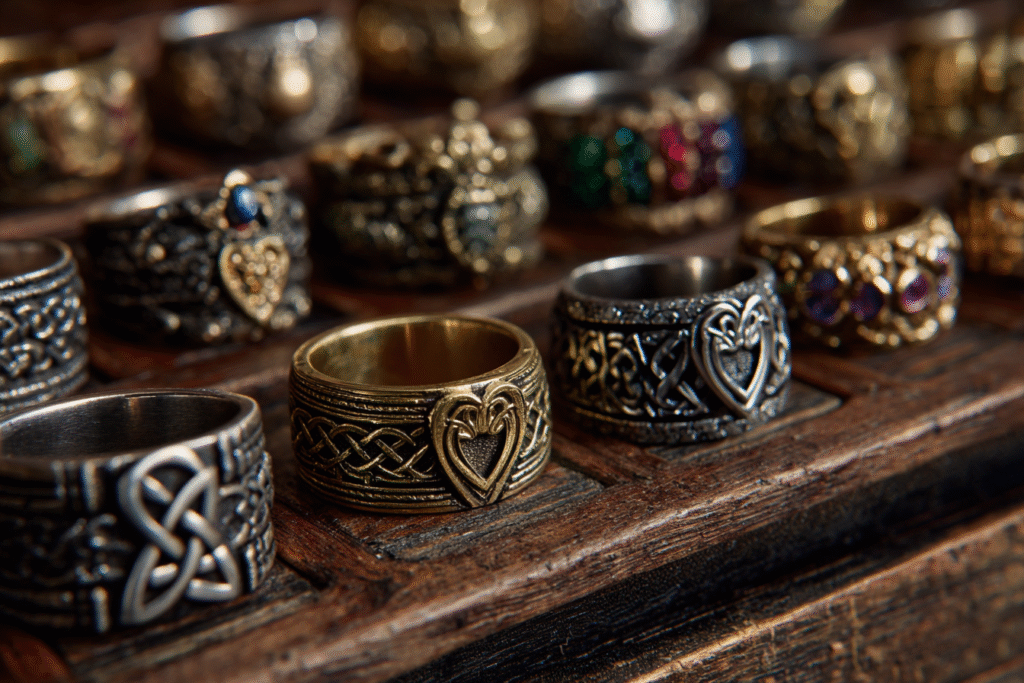
From SRP author Tracy Cooper-Posey:
Once upon a time — actually, back in 2011 — I wrote a post about Claddagh rings as part of a book tour for Blood Knot. That post has since vanished into the digital void, possibly dragged down by dead image links and too many steamy references from an era when Ellora’s Cave still roamed the earth.

The ring I wrote about then even made the cover of the first edition. (Let’s just say that version of the cover is now extremely NSFW, and leave it at that.) The Claddagh ring is no longer part of the design, but its symbolism still sits at the heart of that story — and it deserves a bit of a resurrection here on the blog.
Because Claddagh rings? They’re fascinating. Not just pretty tokens of Celtic pride or sentimental knickknacks picked up on a trip to Ireland. These rings are old, complicated, and steeped in stories — both historical and wildly speculative. The latter is where I come in.
But let’s start with the facts.
A Heart, Two Hands, and a Crown
If you’ve ever seen a Claddagh ring, you’ll recognize the parts: a heart held by two hands, topped with a crown. Love, friendship, loyalty — in that order. The three essential ingredients of a healthy relationship, though not necessarily a chronological checklist. Some of us meet loyalty before love. Some find friendship after marriage. Some are still looking.
The way the ring is worn is supposed to signal your relationship status to the world, which was very handy before dating apps and Instagram overshares.
Traditionally:
- Right hand, heart pointing away from you: single.
- Right hand, heart pointing toward you: spoken for.
- Left hand, heart out: engaged.
- Left hand, heart in: married.
Of course, that’s the theory. In practice, people wear it however they like — or however it fits that day. There’s also the added complication of global interpretations and variations, especially now that Claddagh rings are worn all over the world. But the general idea still holds: love, friendship, loyalty. In whatever order works for you.
My mother-in-law is half-Irish on her mother’s side; she wears a gold Claddagh ring as both a wedding and engagement ring…but the way she wears it (heart up, heart down) varies. I’ve seen her wearing it both ways. So for her, the position of the heart doesn’t matter. And that’s the beauty of these rings. They mean what you want them to mean.
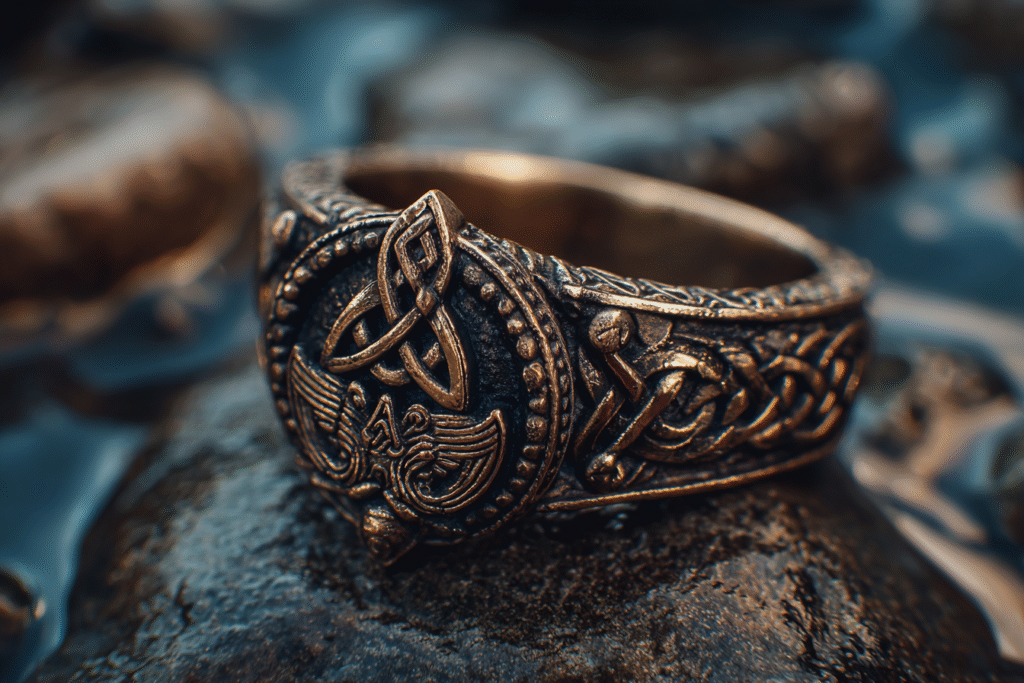
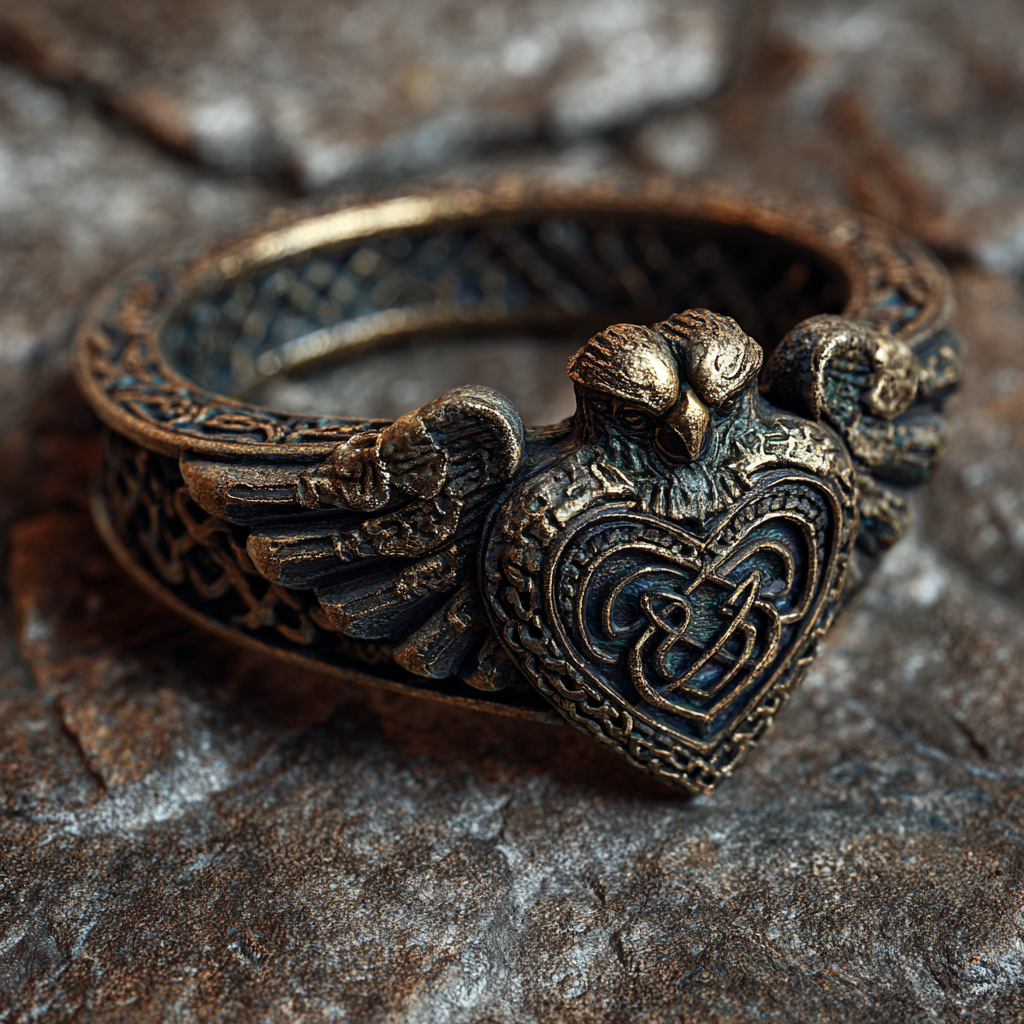
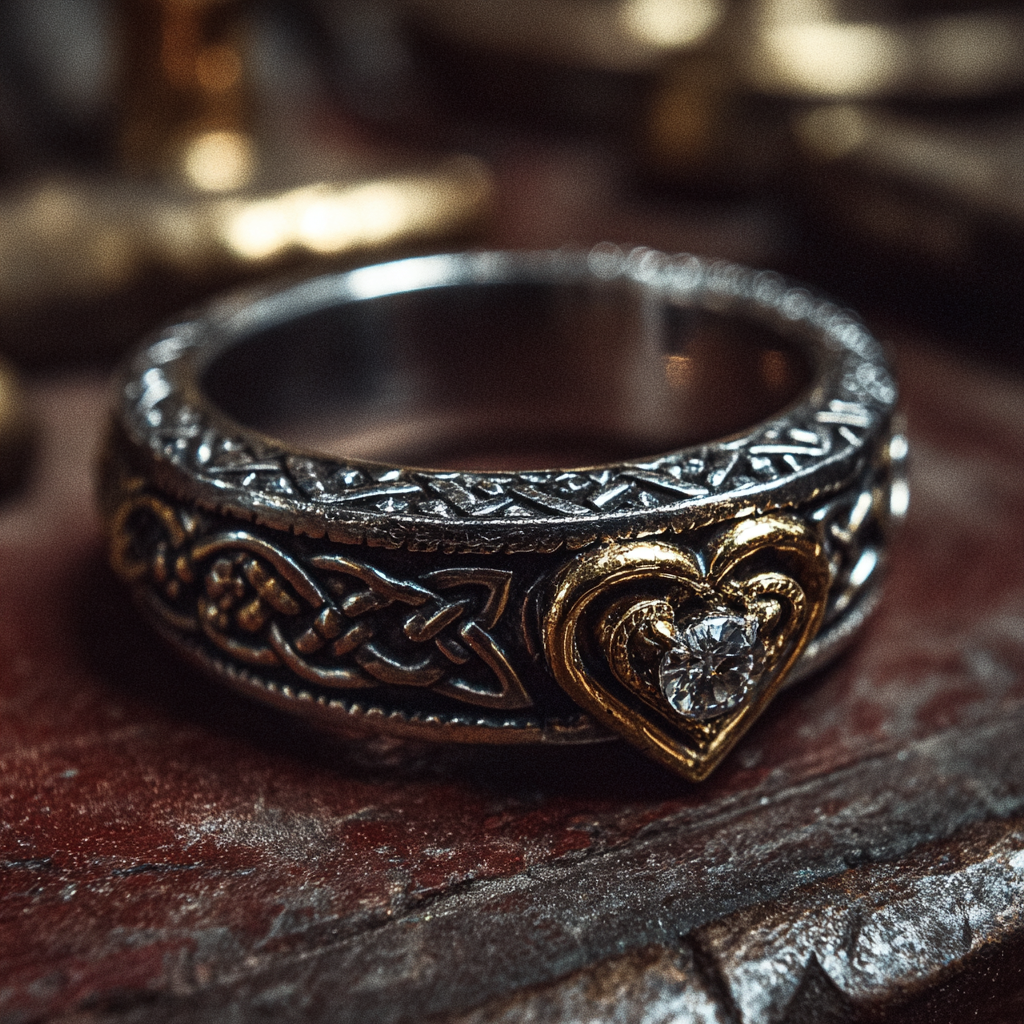
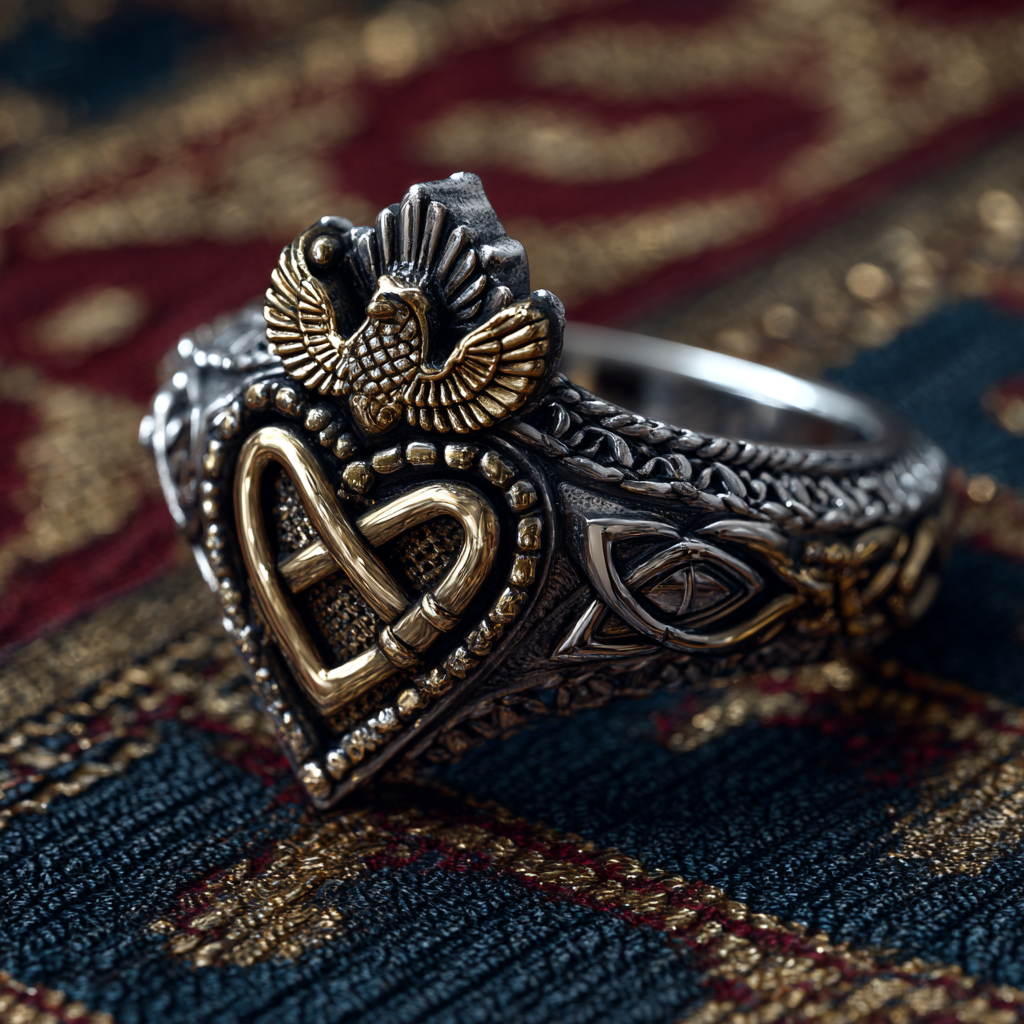
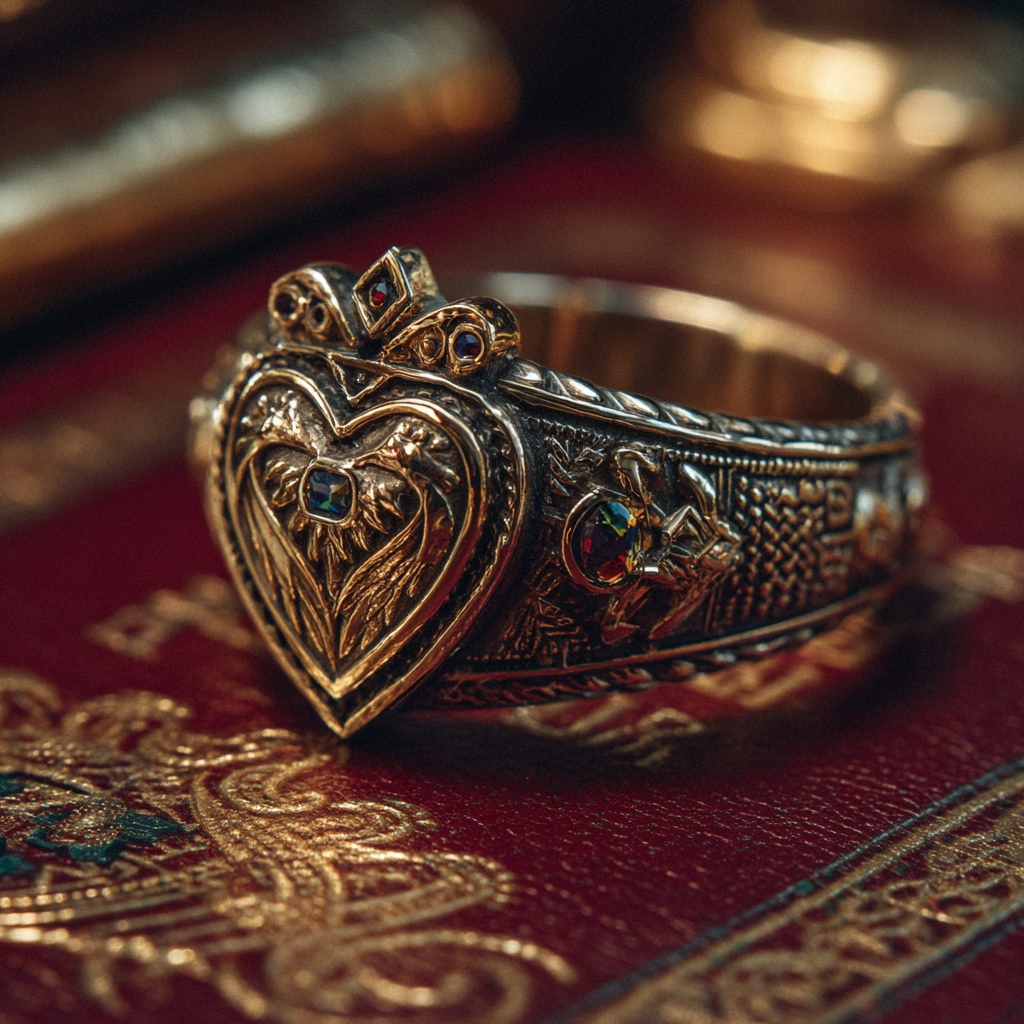
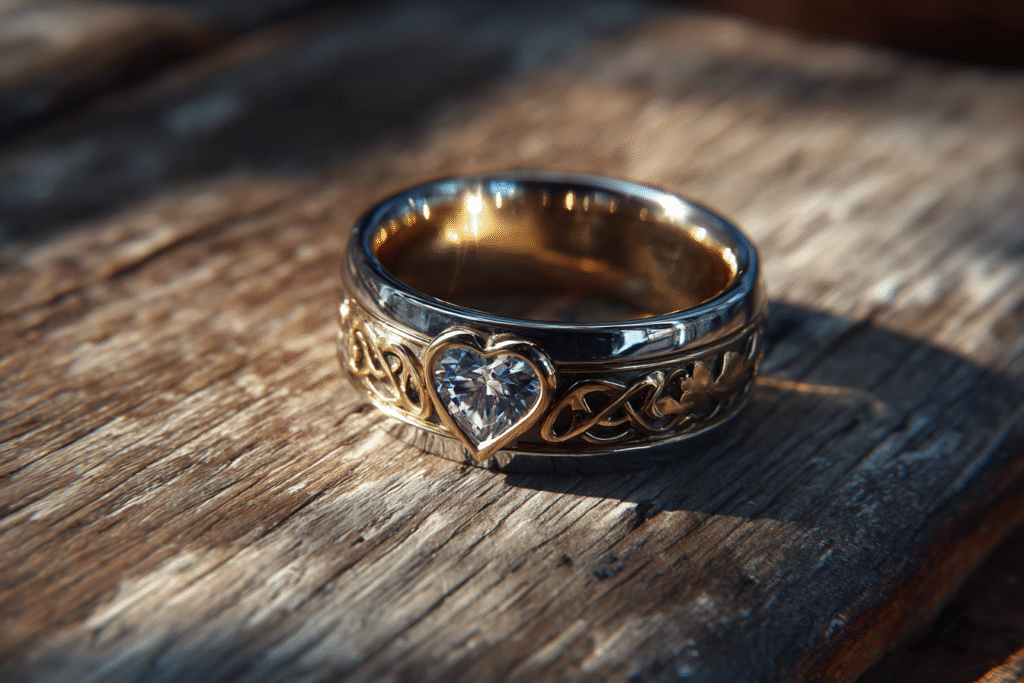
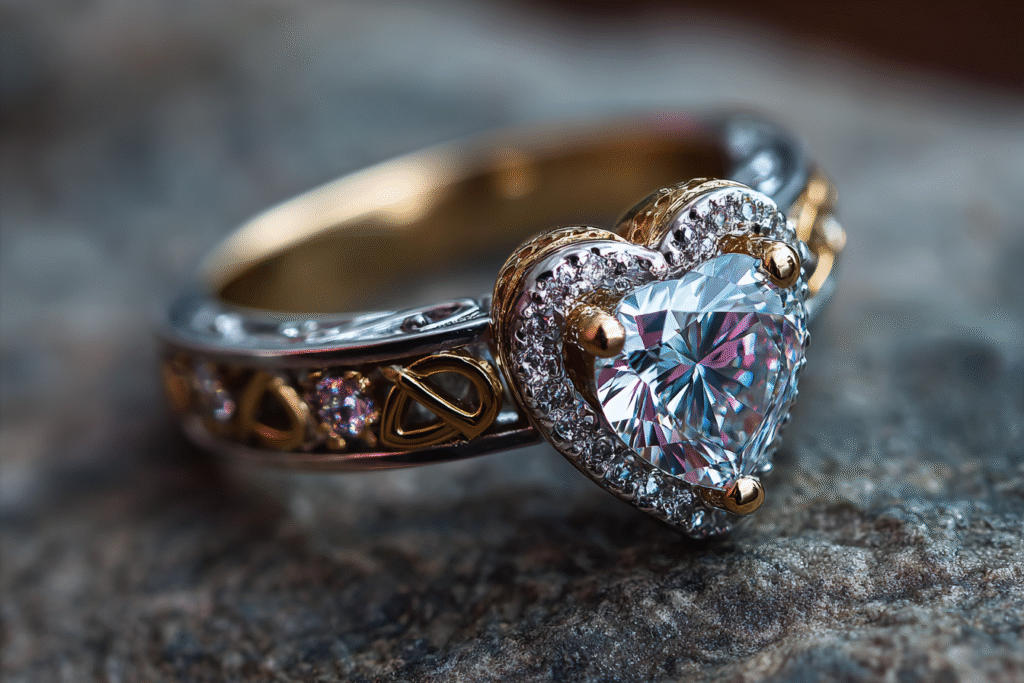
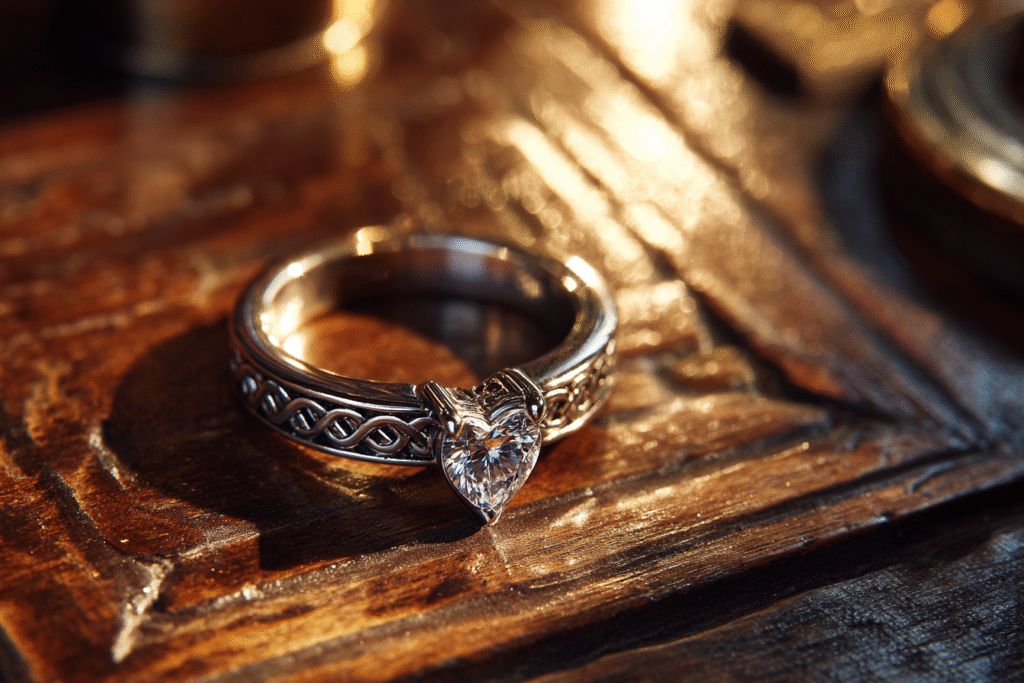
The Curious History of the Claddagh
You’d be forgiven for assuming Claddagh rings are ancient, possibly passed down from bronze-clad druids or flung into the bog with offerings to the gods. In fact, the design we recognize today doesn’t show up until the early 1700s — relatively recent, as far as historical jewellery goes.
The name “Claddagh” itself wasn’t even used until the mid-1800s, and it’s named after a small fishing village just outside Galway, which has now been absorbed by the city but was once its own distinct little enclave. A place of boats and nets and tight-knit traditions, the kind of place where a handmade ring could quietly become a symbol for generations.
There’s a romantic (and possibly true) story about a man named Richard Joyce; captured by pirates, sold into slavery, trained as a goldsmith in North Africa, and eventually returned to Galway, where he crafted the first Claddagh ring for the sweetheart who had waited faithfully for him. That tale has everything: swashbuckling, love, captivity, artistic genius, and an Irishman beating the odds. No wonder it stuck.
But like most origin stories, it’s probably too perfect to be entirely factual. Historians have found early rings with Joyce’s maker’s mark, but also others from the same time made by different goldsmiths. The truth is likely messier — and therefore, more interesting.
Whoever created the Claddagh ring wasn’t working in a vacuum, either.
Even Older Symbols: The Roman Connection
Long before Claddagh rings, there were fede rings. These were Roman in origin, and the name comes from the Italian mani in fede — “hands in faith.” They featured two hands clasped together, a symbol of trust, faith, and plighted troth. (That’s an old-fashioned way of saying “I promise you my heart,” not a typo.)
The Claddagh ring took that visual and added an Irish twist: a heart between the hands, and a crown atop the heart. It layered meaning upon meaning, turned a universal gesture into a localized message.
It’s entirely possible the creator of the Claddagh ring saw a fede ring — or its echo — and adapted it. Or maybe they were just Irish enough to think, “This needs more symbolism and possibly a crown.”
When I discovered this Roman connection to Claddagh rings, when I was researching Blood Knot, I leapt upon it. Nail is Roman to the core, and Sebastian is Irish…I knew that if I didn’t use a Claddagh ring somewhere in the book, I was missing a huge symbolic connector….
In reality, if Claddagh rings are an echo of the Roman fede rings, or not, the bones of the design go back much further than Galway. Which brings me to…
The Fictional Turn
In Blood Knot, I took full advantage of this historical murkiness and handed the ring’s creation to a shadowy Irish father with a gift for emotionally resonant jewellery. Was it historically accurate? Not even a little. But it made a great story, and the ring became a powerful symbol throughout the novel — not just as a romantic token, but as a touchstone for memory, grief, and connection across time.
That’s what old symbols do best. They carry more than their surface meanings. They remember things we’ve forgotten. They tie us to people we’ve never met. Sometimes they haunt us, sometimes they heal.
Even if they no longer make it onto the cover of the book.
Why We Still Wear Them
Claddagh rings are still given and worn today — not just in Ireland, not just by the Irish diaspora, but by people who respond to what the ring means. Sometimes it’s a promise. Sometimes it’s a reminder. Sometimes it’s just beautiful, and that’s enough.
There are modern versions in titanium and tungsten, adorned with gemstones or etched with Celtic knotwork. They’re given as engagement rings, or friendship rings, or family heirlooms. Some are passed down through generations. Others are picked up in a gift shop and loved into legend.
That’s the magic of symbols. We give them meaning, and somehow, they give something back.
A Quick PS, Because Someone Will Ask…
If a woman is already wearing a Claddagh ring in the “engaged” position — left hand, heart facing out — what happens during the wedding ceremony? Does the groom take the ring off and turn it? Does she do it herself?
There’s no single answer, but the most romantic version is this: during the ring exchange, the groom gently removes her Claddagh ring, turns the heart inward, and slides it back on — symbolizing that her heart is now fully given.
In other versions, the bride turns it herself after the ceremony as a quiet, personal gesture. I really like this idea: The woman is controlling her own destiny and making her own decisions about claimed/unclaimed etc.
Some couples choose new wedding bands, and the Claddagh is worn elsewhere or retired. Others keep it as the ring, and the turning becomes part of the ceremony. There’s no hard rule — just story potential.
And yes — men absolutely wear Claddagh rings too. In fact, they were originally more common as men’s rings in Ireland, often passed from father to son. These days they’re worn by men as engagement or wedding bands, heritage pieces, or simply for the meaning. The design might be chunkier or more stylized, but the message — love, loyalty, friendship — stays the same.

Tracy Cooper-Posey
SRP Author



